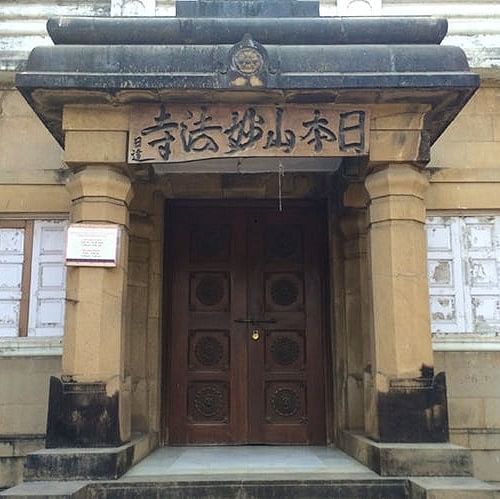Possibly the only surviving Japanese temple in Mumbai, Nipponzan Myohoji Buddhist Temple in Worli stands out amidst the mundane sights of the city. We checked it out, and spoiler alert: it’s as peaceful as we imagined it to be. Back in 1931, when the Japanese monk, Nichidatsu Fuji visited India, he made a pit stop in Mumbai to fulfil the divination that was predicted centuries ago by Maha Bodhisattva Nichiren. Therefore, to fulfil that predicament a small Buddhist temple was built bang in the middle of Worli Naka.
Then in 1956, the temple underwent changes and had a makeover. With a more elaborate praying area, the temple to date stands true to its ancestors and its resident monk (if they’re free and willing) will show you around. Or just sit with you and chat about Buddhism. The calming and peaceful atmosphere is immediately overwhelming after stepping into the temple area from the main road. The traffic and the noise exchanged for quiet and greenery. It’s a strange scenario; one minute you’re surrounded by the honking cars, and the next minute the tall white structure somehow makes it all go away. The temple area is like a silent zone of the library only to be disturbed by the occasional fluttering of the birds that flow onto the surrounding trees.
The structure of the temple is beautiful, with its praying area out in front. Find a big, bold Buddhist inscription on the main door. As we walked around, we were greeted by the resident monk who showed us around. Think oriental in the city of stock markets. The main hall is where everyone gathers to pray, with two wooden drums in the corner. The walls adorn paintings of Buddha’s life and a six and a half feet marble statue of Buddha in one of the smaller rooms. Chanting the mantra na-mu-myo-ho-ren-ge-kyo is the norm here, and we found ourselves soothed by the musical chants.
We’d been exploring the city to find our peaceful spot for a while now, and we think we did. The almost forgotten Japanese Temple is the epitome of juxtaposition, the rare city moment where history and modernity go side by side. Just what Mumbai in itself is.

